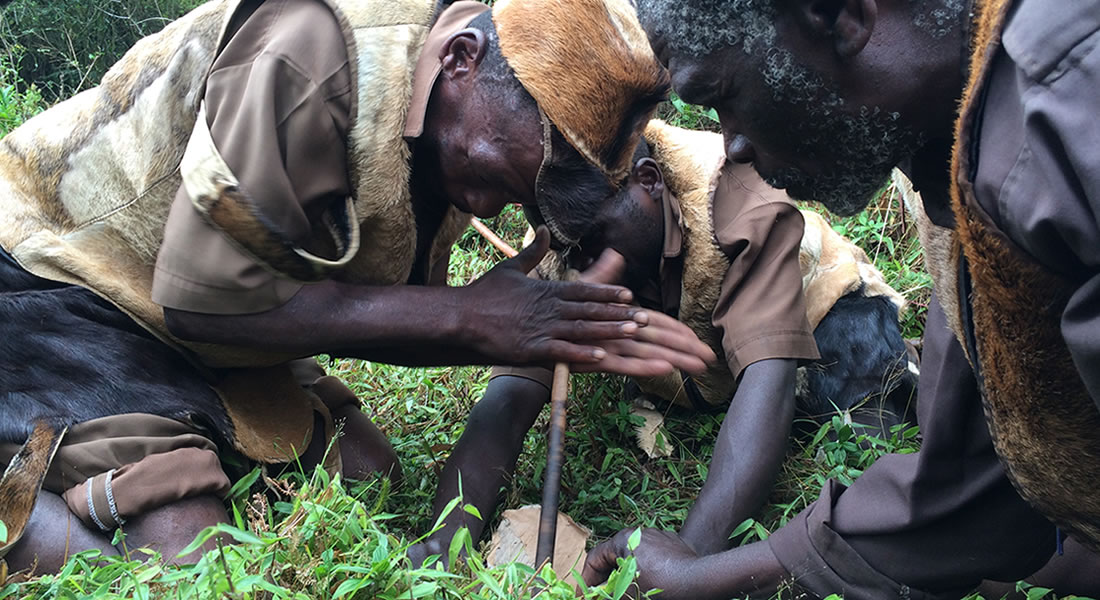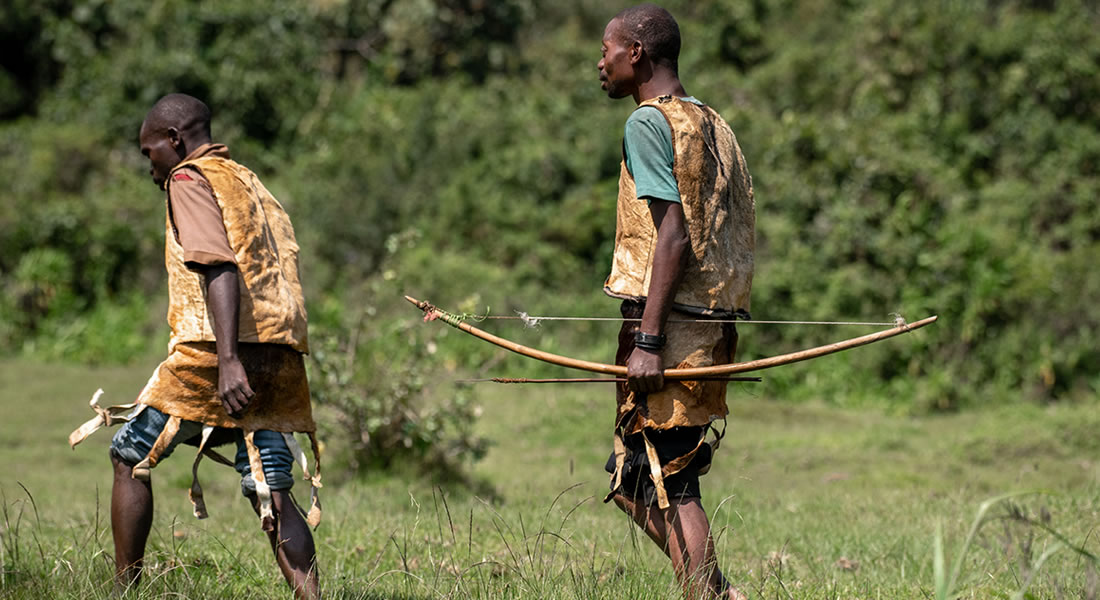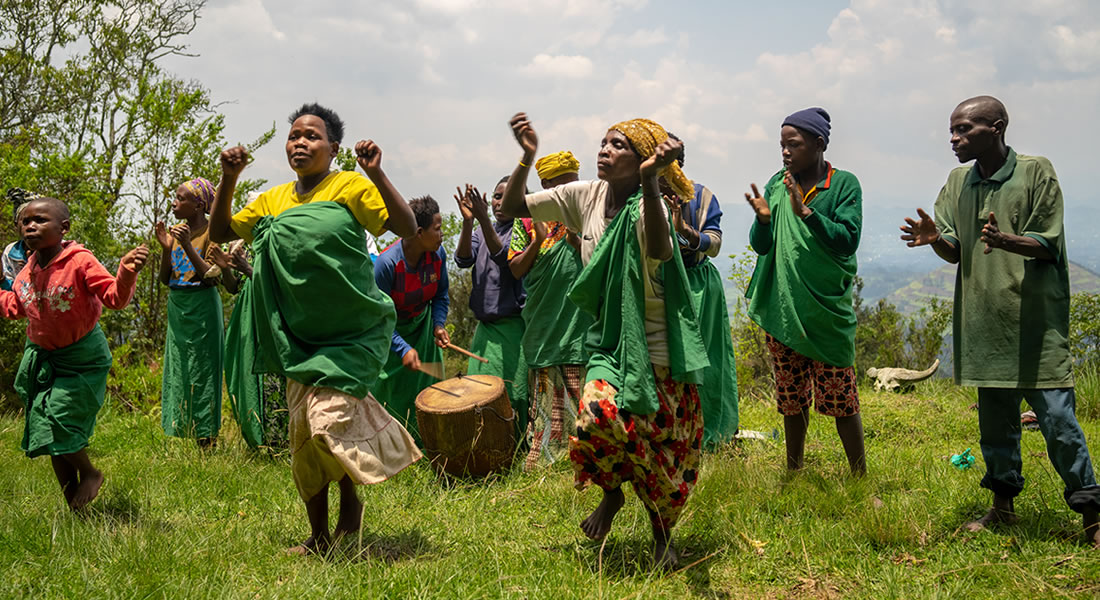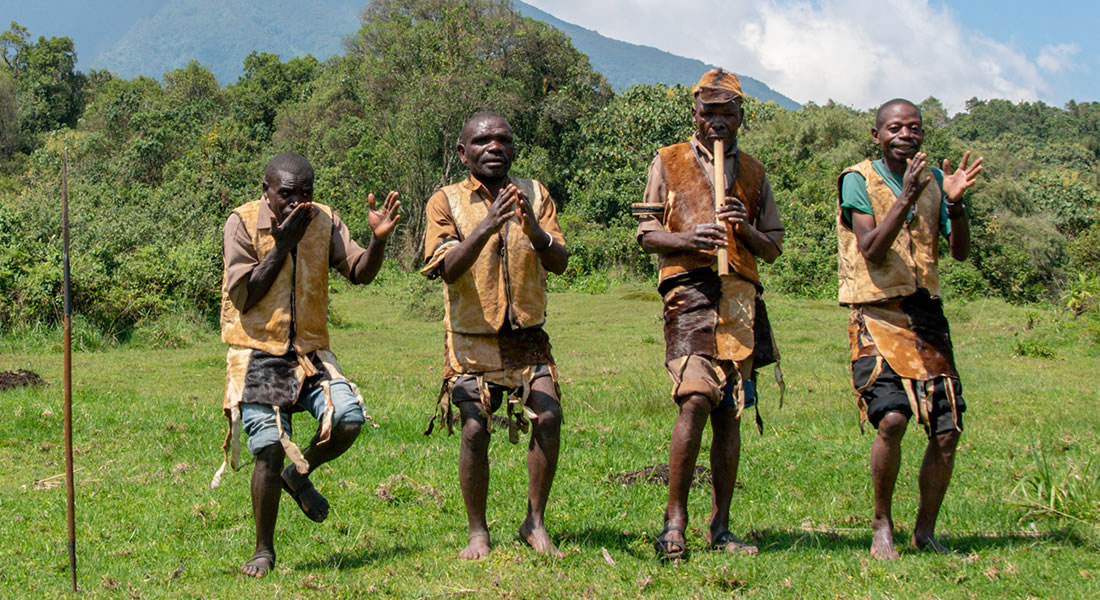Rwanda Gorilla Trekking is undoubtedly one of the most popular vacation activities in Africa since…

The Batwa are one of the last groups of short structured people (pygmies). They were the original dwellers of the ancient jungle Bwindi Impenetrable National Park also known as the forest keepers. The Batwa survived by hunting small game using bows and arrows or nets gathering plants and fruits in the rain forest. They lived in huts structured of leaves and branches moving frequently in search of fresh supplies of food. These people lived in harmony with the forest and its creatures including the ultimate mountain gorillas. The Batwa Cultural Experience in Uganda gives you a unique perspective into the lives of this indigenous group of people.
The Batwa live in the south western districts of Kisoro, Kabale, Kanungu ,Bundibujo and Rukungiri. The size of the Batwa is quite different from other tribes in Uganda the men and women raise to an average of four feet in height the tallest among the Batwa is the shortest in the neighbouring community the Bakiga. Traditionally the Batwa lived as hunters residing in huts and caves. Each clan collectively owned an area with in the forest which they derived food and herbal medicine for their subsistence. The forest was their home until Bwindi Impenetrable National Park was gazetted in 1991 as a national park. They were evicted from the forest and forced to abandon their nomadic life style.

The Batwa Cultural Experience was created by the displaced pygmies to educate their children and share their amazing heritage and traditions with the world. Tourists that visit Uganda for gorilla trekking often times get a chance to also learn about this unique group of people. The Batwa experience takes place outside the park in an old growth forest on land that is next to Bwindi Impenetrable National Park. It begins with a nature walk, hike through the forest seeing the forest in a new way through the eyes of the original forest keepers.
The Batwa give a good cultural experience of Uganda safari tours to visitors that reach out to Bwindi Impenetrable National Park involving their cultural ways and experiences. The Batwa trail was launched in 2011 as a way of preserving Batwa culture and traditions and as a way of integrating conservation with cultural development. It offers employment to the Batwa who are engaged in the day today activities in the Batwa trail such as dancers and guides.

The Batwa trail is an attraction that runs across the lower slopes of the Muhavura and Gahinga Volcanoes in Mgahinga National Park. The forest has a variety of wildlife but the Batwa trail is far from just being a nature walk. The Batwa guides lead through the forest. Along the trail, you will be able to fire a bow and arrow, check hives for honey, help repair their shelters, harvest plants for medicine and food light a fire without matches.one will be taught how they used their nets and traps, learn what kind of food is prepared and what they used to eat, show them how they used to stay in caves and grass hutched houses learn about the things they cared for most and almost lost.
The Batwa engage in craft making that are sold to the tourists to earn some income for a living. The experience is an interactive time of learning, seeing the forest in both new and old ways. The minimum number for Batwa Cultural Experience is one and maximum 12 for morning and afternoon.

The Batwa trail is located in Mgahinga Gorilla National Park on the slopes of Virunga Volcanoes in south western Uganda. The park lies 540km from Kampala and 10km south of Kisoro. Chattered flights can be organized from Entebbe Airport or Kampala Kajjansi to Kisoro Airstrip. A wide choice of lodging is available in Kisoro. Basic cottages are provided in the community campground, volcanoes camp provides up market accommodation as well.
In conclusion, the Batwa Cultural Experience is an amazing thing that you should endeavor to get involved in while to Bwindi Impenetrable National Park.


